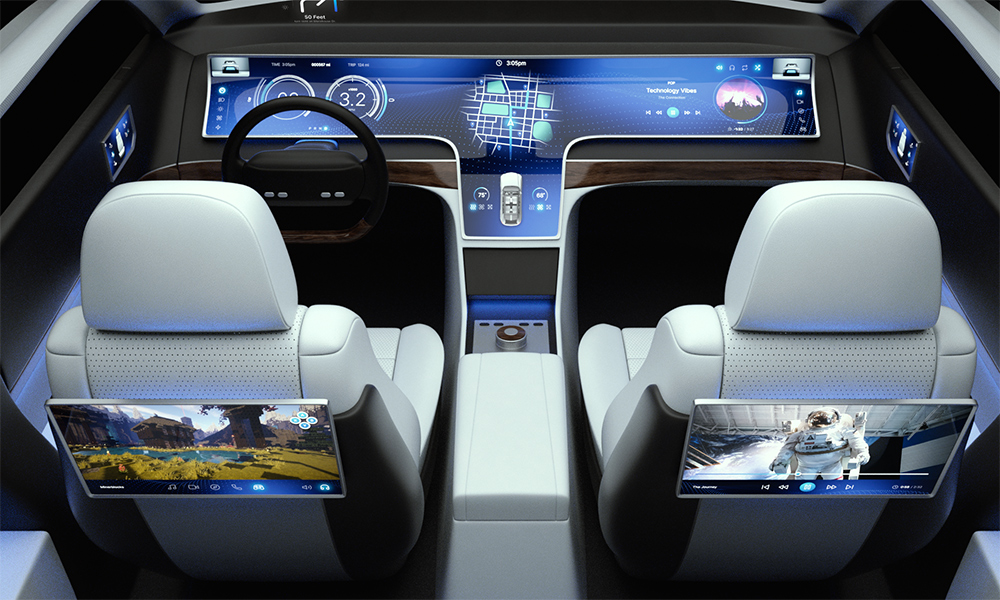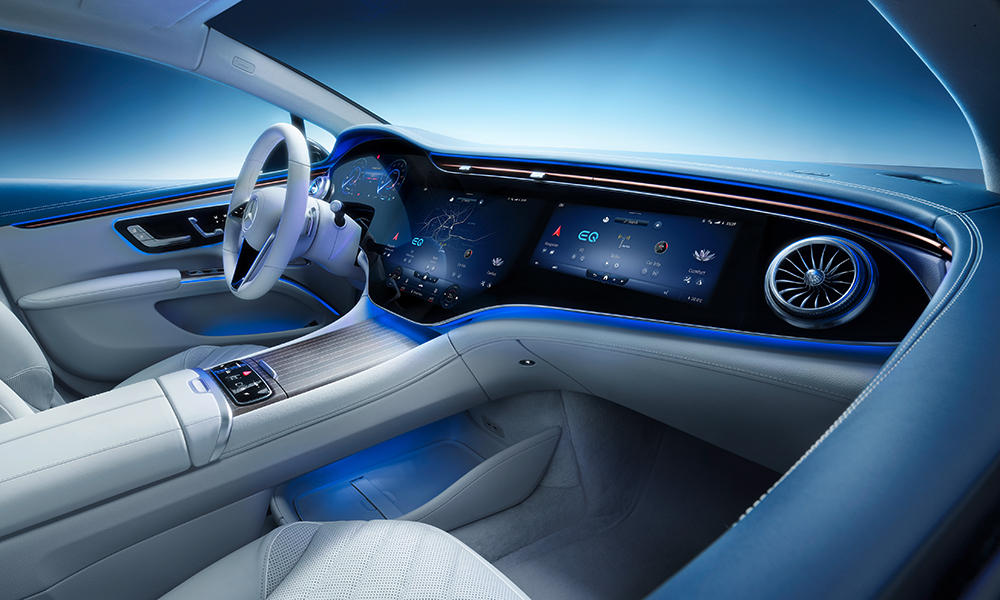特斯拉(Tesla)將汽車變成了輪子上的智能手機,而落在后面的汽車制造商如今開始寄希望于移動手機芯片制造商幫助其縮小不斷擴大的技術差距。
上周,半導體設計商高通(Qualcomm)與包括沃爾沃(Volvo)和本田(Honda)在內的數家汽車品牌達成了進一步的交易,這些交易有望滿足駕駛者不斷增長的需求,也就是在車中享受三星(Samsung)的Galaxy S21手機能夠給其帶來的無縫連接性。
過去,汽車制造商非常不愿意透露其汽車零部件的供應商。然而,芯片制造商不斷增長的重要性則打亂了這個傳統行業的等級關系。這些不可阻擋的趨勢讓半導體制造公司一躍站到了食物鏈的頂端,也讓其成為了汽車公司的戰略合作伙伴,而不僅僅只是一家底層供應商。
高通的首席執行官安蒙(Cristiano Amon)在今年的國際消費電子展(Consumer Electronics Show)上表示,高通只是在應用其在智能手機中大獲成功的“相同策略”,以打造一系列價值約130億美元的交易,而此時公司甚至還沒有開展第一次收購。
這位首席執行官在上周說:“科技對汽車行業的顛覆程度要比對其他任何行業都更猛烈。汽車已經被徹底改變,持有和駕駛車輛的體驗也發生了變化。汽車公司與其客戶之間的關系亦是如此。”

全球半導體的短缺已經凸顯了芯片在保持汽車生產線運轉方面的重要性。然而,特斯拉卻沒有受到這一短缺的影響,其產量在去年增長了87%,因為它采用的方式是將汽車算力集中于一個高級處理器,而不是用可靠、穩健但已被淘汰的電路系統,將算力分散至各種商用微控制器。
正是因為采用了這種方式,特斯拉在改善汽車性能和續航方面的能力才一直處于領先地位,并在數年前就先于對手通過無線固件升級,解鎖了多種有趣的新功能,例如視頻游戲和其他復活節彩蛋。
集大成者的駕駛艙
埃隆·馬斯克的成功證明,對購車者來說,遠程信息處理、娛樂信息節目以及高級自動駕駛功能在未來的重要性,即便不超過汽車的馬力和扭矩參數,也將處于同一水平。這一趨勢甚至促使索尼(Sony)這類消費電子集團開始考慮造車。
高通將這三種迅速發展的領域統稱為汽車的“數字底盤”,也就是車輛必需的、與機械部件有著同樣重要意義的電子原件部分。這兩者的結合將提升消費者在駕駛時的整體用戶體驗。
高通歐洲(Qualcomm Europe)的業務負責人恩里科·薩爾夫托里在上周對記者說:“我們堅信,對于汽車架構師來說,數字底盤是未來[競爭]的差異化元素。”
不管是大眾(Volkswagen)的ID.4增強現實型駕駛員抬頭顯示,橫跨梅賽德斯-奔馳(Mercedes-Benz)的EQS儀表板的有機形狀超級屏幕,還是特斯拉的Model S Plaid的強大的中央顯示屏,汽車向其用戶傳遞信息的方式正在變得越來越具有創新力。這一趨勢則要求汽車采用更加復雜的處理器來實現。

沃爾沃及其附屬主打性能的品牌極星(Polestar)如今已經同意在其即將發布的電動車型中使用第三代高通驍龍Cockpit芯片,以打造更具吸引力、可以媲美特斯拉的體驗。
通過以簡單、直觀的方式合理地傳輸數據,汽車制造商及其芯片合作伙伴還能夠協助駕駛員的決策過程,并改善交通安全性。
沃爾沃汽車(Volvo Cars)的用戶體驗業務負責人托馬斯·斯托維切克稱:“汽車將變得更加互聯,而且將有更多的感應器,會搜集更多的信息,也會向用戶展示更多的信息。所有這一切都將面向用戶匯聚于駕駛艙中。”
索尼PlayStation的力量
傳統汽車制造商還有很多需要迎頭趕上的地方。大多數平價車型配備的都是傳統的儀表盤,而不是數字儀表盤。保時捷(Porsche)在設計時就沒有考慮使用數字儀表盤:他們打造的每一輛燃油車至少都配備了一個模擬轉速表測量儀,這樣,駕駛者在引擎工作時便可以看到指針的轉動情況。
特斯拉最新的娛樂信息節目系統名為MCU3,擁有絲滑的觸屏指令流暢度和超快的響應速度。在下一代硬件升級時,馬斯克傾向于放棄此前較慢的英特爾(Intel)的Atom處理器,并選用來自于其競爭對手AMD的Ryzen嵌入式芯片。此舉將讓MCU3的算力向索尼最新的PS5游戲主機看齊。
法國的汽車制造商雷諾(Renault)已經充分認識到,公司需要對全系列車型的儀表板科技大動干戈。公司已經開始采購高通第三代驍龍Cockpit信息娛樂節目芯片,并在與高通簽署新協議之前將其用于自家全新緊湊型電動轎跑Mégane E-Tech。
雷諾計劃在其整個產品線中都采用全系列的高通汽車半導體產品,包括驍龍Ride高級駕駛員協助處理器。雙方的交易顯示,首款車型將于2026年年初面世。通用汽車(General Motors)在上周也表示,公司將從高通購買自動駕駛芯片,并將其用于即將推出的凱迪拉克(Cadillac)的Celestiq車型。
雷諾集團(Renault Group)的首席執行官盧卡·德·梅奧在上周的國際消費電子展上解釋說:“如今,汽車行業格局的演變速度比以往任何時候都快。汽車體驗正越來越數字化。因此,要跟上客戶的期許,我們就得與高通這樣的頂級科技公司保持密切合作。”(財富中文網)
譯者:馮豐
審校:夏林
特斯拉(Tesla)將汽車變成了輪子上的智能手機,而落在后面的汽車制造商如今開始寄希望于移動手機芯片制造商幫助其縮小不斷擴大的技術差距。
上周,半導體設計商高通(Qualcomm)與包括沃爾沃(Volvo)和本田(Honda)在內的數家汽車品牌達成了進一步的交易,這些交易有望滿足駕駛者不斷增長的需求,也就是在車中享受三星(Samsung)的Galaxy S21手機能夠給其帶來的無縫連接性。
過去,汽車制造商非常不愿意透露其汽車零部件的供應商。然而,芯片制造商不斷增長的重要性則打亂了這個傳統行業的等級關系。這些不可阻擋的趨勢讓半導體制造公司一躍站到了食物鏈的頂端,也讓其成為了汽車公司的戰略合作伙伴,而不僅僅只是一家底層供應商。
高通的首席執行官安蒙(Cristiano Amon)在今年的國際消費電子展(Consumer Electronics Show)上表示,高通只是在應用其在智能手機中大獲成功的“相同策略”,以打造一系列價值約130億美元的交易,而此時公司甚至還沒有開展第一次收購。
這位首席執行官在上周說:“科技對汽車行業的顛覆程度要比對其他任何行業都更猛烈。汽車已經被徹底改變,持有和駕駛車輛的體驗也發生了變化。汽車公司與其客戶之間的關系亦是如此。”
全球半導體的短缺已經凸顯了芯片在保持汽車生產線運轉方面的重要性。然而,特斯拉卻沒有受到這一短缺的影響,其產量在去年增長了87%,因為它采用的方式是將汽車算力集中于一個高級處理器,而不是用可靠、穩健但已被淘汰的電路系統,將算力分散至各種商用微控制器。
正是因為采用了這種方式,特斯拉在改善汽車性能和續航方面的能力才一直處于領先地位,并在數年前就先于對手通過無線固件升級,解鎖了多種有趣的新功能,例如視頻游戲和其他復活節彩蛋。
集大成者的駕駛艙
埃隆·馬斯克的成功證明,對購車者來說,遠程信息處理、娛樂信息節目以及高級自動駕駛功能在未來的重要性,即便不超過汽車的馬力和扭矩參數,也將處于同一水平。這一趨勢甚至促使索尼(Sony)這類消費電子集團開始考慮造車。
高通將這三種迅速發展的領域統稱為汽車的“數字底盤”,也就是車輛必需的、與機械部件有著同樣重要意義的電子原件部分。這兩者的結合將提升消費者在駕駛時的整體用戶體驗。
高通歐洲(Qualcomm Europe)的業務負責人恩里科·薩爾夫托里在上周對記者說:“我們堅信,對于汽車架構師來說,數字底盤是未來[競爭]的差異化元素。”
不管是大眾(Volkswagen)的ID.4增強現實型駕駛員抬頭顯示,橫跨梅賽德斯-奔馳(Mercedes-Benz)的EQS儀表板的有機形狀超級屏幕,還是特斯拉的Model S Plaid的強大的中央顯示屏,汽車向其用戶傳遞信息的方式正在變得越來越具有創新力。這一趨勢則要求汽車采用更加復雜的處理器來實現。
沃爾沃及其附屬主打性能的品牌極星(Polestar)如今已經同意在其即將發布的電動車型中使用第三代高通驍龍Cockpit芯片,以打造更具吸引力、可以媲美特斯拉的體驗。
通過以簡單、直觀的方式合理地傳輸數據,汽車制造商及其芯片合作伙伴還能夠協助駕駛員的決策過程,并改善交通安全性。
沃爾沃汽車(Volvo Cars)的用戶體驗業務負責人托馬斯·斯托維切克稱:“汽車將變得更加互聯,而且將有更多的感應器,會搜集更多的信息,也會向用戶展示更多的信息。所有這一切都將面向用戶匯聚于駕駛艙中。”
索尼PlayStation的力量
傳統汽車制造商還有很多需要迎頭趕上的地方。大多數平價車型配備的都是傳統的儀表盤,而不是數字儀表盤。保時捷(Porsche)在設計時就沒有考慮使用數字儀表盤:他們打造的每一輛燃油車至少都配備了一個模擬轉速表測量儀,這樣,駕駛者在引擎工作時便可以看到指針的轉動情況。
特斯拉最新的娛樂信息節目系統名為MCU3,擁有絲滑的觸屏指令流暢度和超快的響應速度。在下一代硬件升級時,馬斯克傾向于放棄此前較慢的英特爾(Intel)的Atom處理器,并選用來自于其競爭對手AMD的Ryzen嵌入式芯片。此舉將讓MCU3的算力向索尼最新的PS5游戲主機看齊。
法國的汽車制造商雷諾(Renault)已經充分認識到,公司需要對全系列車型的儀表板科技大動干戈。公司已經開始采購高通第三代驍龍Cockpit信息娛樂節目芯片,并在與高通簽署新協議之前將其用于自家全新緊湊型電動轎跑Mégane E-Tech。
雷諾計劃在其整個產品線中都采用全系列的高通汽車半導體產品,包括驍龍Ride高級駕駛員協助處理器。雙方的交易顯示,首款車型將于2026年年初面世。通用汽車(General Motors)在上周也表示,公司將從高通購買自動駕駛芯片,并將其用于即將推出的凱迪拉克(Cadillac)的Celestiq車型。
雷諾集團(Renault Group)的首席執行官盧卡·德·梅奧在上周的國際消費電子展上解釋說:“如今,汽車行業格局的演變速度比以往任何時候都快。汽車體驗正越來越數字化。因此,要跟上客戶的期許,我們就得與高通這樣的頂級科技公司保持密切合作。”(財富中文網)
譯者:馮豐
審校:夏林
After Tesla transformed the car into a smartphone on wheels, automakers lagging behind are now turning to a mobile handset chip provider to help narrow the widening technology gap.
Semiconductor designer Qualcomm inked further deals with a number of auto brands including Volvo and Honda at last week that will serve the growing demand by drivers to enjoy the kind of seamless connectivity they know from their Samsung Galaxy S21 when in their cars.
In the past, automakers were all too loath to reveal who provided parts for their vehicles. The growing importance of chipmakers, however, has upended the traditional industry pecking order. Overarching trends have catapulted semiconductor companies to the top of the food chain—making them a strategic partner to car companies rather than just a bottom-tier supplier.
Qualcomm chief executive Cristiano Amon told attendees at the Consumer Electronics Show (CES) that his company was simply applying the “same recipe” that saw it succeed in smartphones in order to build up a pipeline of deals worth some $13 billion even before it launched its first acquisition.
“There is no bigger disruption from a technology standpoint than automotive, when compared to every other industry,” the CEO said last week. “The car has been completely transformed—the experience of owning and driving a car is different. The relationship between car companies with their customers is different.”
The global semiconductor shortage has highlighted the importance of chips in keeping automotive assembly lines running. Yet Tesla has been able to skirt the chip crunch and grow volumes 87% last year by relying on advanced processors that centralize a vehicle’s computing power rather than distribute it among a large array of commodity microcontrollers using proven and robust yet obsolete circuitry.
It is precisely because of this approach that Tesla has pioneered the ability to improve a car’s performance and range, and unlock fun new features like video games and other Easter eggs, via over-the-air firmware updates, years ahead of its competition.
Converging in the cockpit
Elon Musk’s success has proved that telematics, infotainment, and advanced self-driving features are becoming every bit as important to car buyers in the future as horsepower and torque, if not more. It’s even prompting some consumer electronics groups like Sony to now consider building cars.
Qualcomm refers to these three rapidly developing disciplines collectively as a car’s “digital chassis,” the electronic equivalent to its mechanical counterpart underpinning the vehicle. Together they combine to enhance a consumer’s overall user experience, or UX, when driving.
“We strongly believe the digital chassis is the element of [competitive] differentiation for the architecture of a car in the future,” Qualcomm Europe boss Enrico Salvatori told reporters last week.
Whether it is the augmented-reality driver head-up display in the Volkswagen ID.4, the organically shaped Hyperscreen that stretches across the entire dashboard of the Mercedes-Benz EQS sedan, or the powerful central display in a Tesla Model S Plaid, information is being relayed to a car’s users in increasingly innovative ways. These in turn demand increasingly complex processors to power them.
Volvo and its affiliated performance brand Polestar have now agreed to use the third generation of Qualcomm’s Snapdragon Cockpit in their upcoming electric vehicles to create a more appealing experience that can compete with that delivered by Tesla.
By properly conveying data in an easy and intuitive manner, automakers and their chip partners can also aid drivers in their decision-making process and improve traffic safety.
“Cars are getting more connected, there is more sensors, more information being collected and presented to the users,” said Thomas Stovicek, head of UX at Volvo Cars. “All of this is coming together at a converging point for the user within the cockpit.”
Power of a Sony PlayStation
Legacy carmakers have a lot of catching up to do, though. Most affordable cars come standard with old-school instrument clusters rather than digital ones. For Porsche it’s even by design: Each combustion engine car they build comes with at least an analog tachometer gauge so drivers can see the needle spin when the motor revs.
Tesla’s latest infotainment system known as MCU3 meanwhile features silky smooth and ultrafast responsiveness to touch-screen commands. In upgrading to next-generation hardware, Musk opted to swap out the previous, slower Intel Atom processor in favor of a Ryzen Embedded chip from rival semiconductor supplier AMD. This endows the MCU3 with computing power roughly equivalent to Sony’s newest PlayStation 5 gaming console.
French carmaker Renault didn’t need any further convincing that its range required a major overhaul in dashboard technology. It had already begun sourcing Qualcomm’s third-gen Snapdragon Cockpit infotainment chips for its new compact electric hatchback, the Mégane E-Tech, before signing up for a new deal with the chipmaker.
Renault plans to roll out the full portfolio of Qualcomm’s automotive semiconductors across its entire lineup, including the Snapdragon Ride advanced driver assistance processor, in a deal that will see the first vehicles launch in early 2026. (General Motors also said last week it would purchase self-driving chips from the company for its upcoming Cadillac Celestiq.)
“Today’s automotive landscape is evolving more rapidly than ever; the automotive experience is increasingly digital,” Renault Group CEO Luca de Meo explained at last week’s CES. “So keeping up with our customer expectations requires working closely with top tech companies like Qualcomm.”






